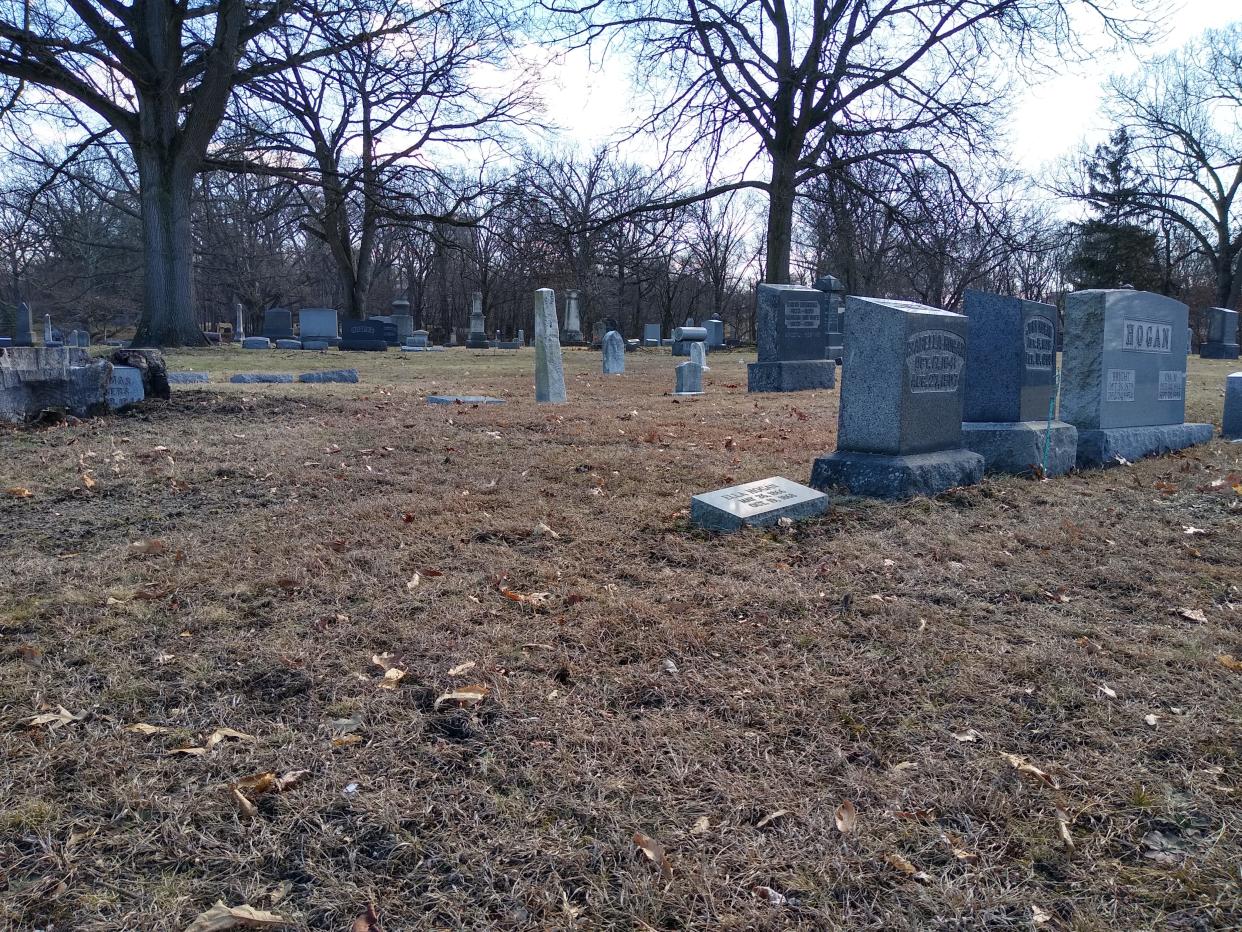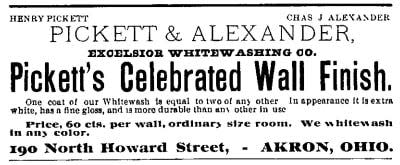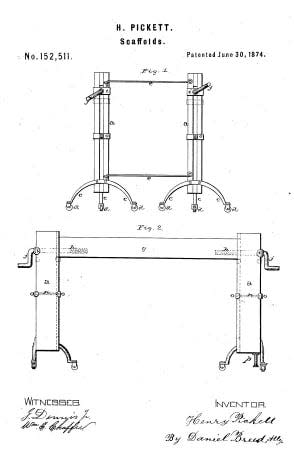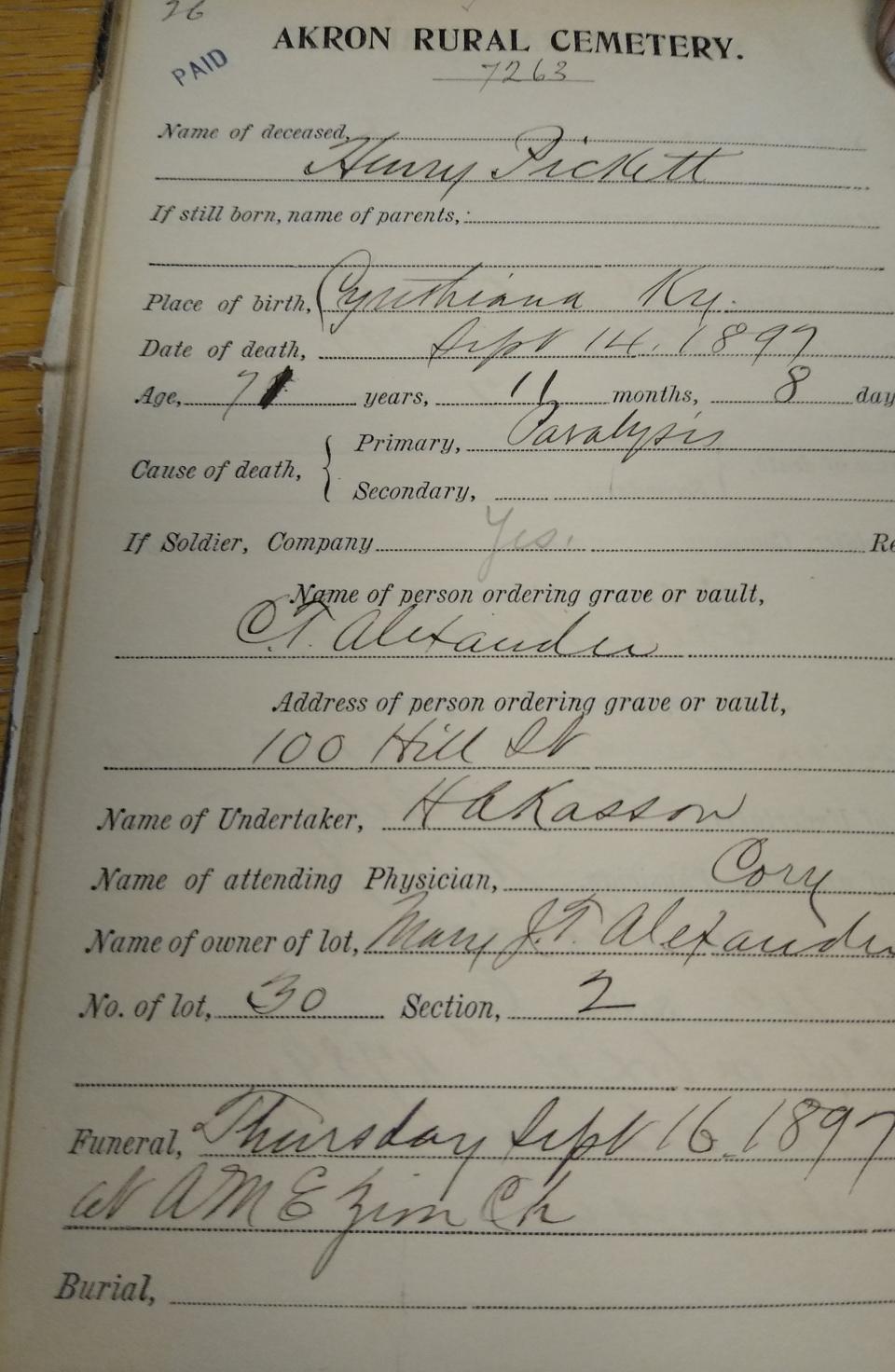Local history: Akron inventor a forgotten genius

Dead leaves skittered across the grass as a cold wind blew through Glendale Cemetery. Rows of faded headstones jutted up from the ground at odd angles.
A long search ended in frustration. Henry Pickett’s grave marker is missing.
Government records reveal that the Vermont Marble Co. supplied a headstone for the Civil War veteran following his death in 1897. Something happened to it over the past century. He’s buried in Section 2, Lot 30, next to his wife, son and stepson at the Akron cemetery.
They don’t have markers either.
The renowned inventor and his family have been forgotten.
Local history:Akron landmarks in Black history
What is Henry Pickett’s story?
We don’t have a photo of Pickett or know much about him. With a bit of research, it’s possible to cobble together details of his life, but there are gaping holes in the narrative. We may never know the entire story.
Pickett was an African American born in 1826 in Cynthiana, Kentucky, about 60 miles south of Cincinnati. It’s probable he was born into slavery, although his home county, Harrison, also was home to dozens of “free Blacks” at the time.
He found his way north at some point. During the Civil War, he joined the 27th Ohio Infantry Regiment in 1864, serving in Georgia, South Carolina and Florida until 1865.
Afterward, he settled in Akron, a canal town with fewer than 200 Black residents. He and his wife, Mary J. Pickett, an Indiana native, had at least one son together, Alexander, as well as another son, Charles, from her previous marriage.

A plasterer by trade, Pickett operated one of Akron’s first Black-owned businesses, Excelsior Whitewashing, with his adult sons. The North Howard Street shop advertised Pickett’s Celebrated Wall Finish.
They charged 60 cents per wall for an “ordinary size room.”
“One coat of our Whitewash is equal to two of any other,” Excelsior touted. “In appearance it is extra white, has a fine gloss, and is more durable than any other in use.”
Support local journalism:6 reasons why you should subscribe to the Akron Beacon Journal
When working on a job, Pickett had plenty of time to contemplate the bulky, cumbersome scaffolds of the day. They weren’t easy to move or adjust, and it was time-consuming, not to mention annoying, to reposition them.
There just had to be an easier method. Tinkering around in his shop, he began to design a scaffold that was strong, durable, compact, safe and light.
Finally, he applied for a patent March 2, 1874, with the U.S. Patent Office.
“Be it known that I, Henry Pickett, of Akron, in the county of Summit and State of Ohio, have invented certain new and useful Improvements in Plastering-Scaffolds,” he wrote.
Patent awarded for new scaffold
The inventor explained that “the arrangement and combination of the parts,” including screw bolts, slotted posts, horizontal beams, clamping plates and hand cranks, would produce “a cheap, portable and adjustable scaffold” for plasterers, carpenters and other laborers.
Not to get too technical, but …
“Each pair of posts is connected together by a horizontal beam … which can be adjusted freely up and down, so as to regulate the height of the scaffold, the ends of the beams being guided in grooves made in the inner sides of the posts,” Pickett wrote in his application. “... These beams are secured in any desired position by means of the screw-bolts … which pass through the clamping-plates … through the slots in the posts, into the ends of the beams, the bolts being provided with the hand-cranks … on their outer ends, so that they can be readily loosened and fastened.”
Pickett was awarded Patent No. 152,511 on June 30, 1874. He proudly demonstrated his model before crowds at the Summit County Fair, Akron City Hall and East Market Street. Local laborers recognized the inventor’s genius.

Using the vernacular of the day, a Summit County Beacon headline noted Sept. 22, 1880: “An Akron Colored Man Invents A Superior Scaffolding.”
“The scaffold consists of upright posts, connected by bars, of any length and fastened with a clamp,” the newspaper reported. “The bars being movable, the scaffold can be put up at any distance from the floor or ceiling. In short, the scaffold possesses such merit as will commend it to all plasterers, brick masons, etc., who will give it a fair trial. Mr. P. is to be congratulated in being able to meet a much felt want, and we wish him success in his new calling.”
In 1884, Pickett rented the second and third floors of a North Main Street building to manufacture his patented scaffolds. After being appointed Ohio assistant commissioner of exhibits to the World’s Fair in New Orleans that same year, he shipped a scaffold to Louisiana for exhibit.
More than 1 million people passed the display during the fair’s six-month run.
Local history:101 trailblazers who achieved famous firsts in Akron Black history
Back in Akron, the inventor opened Pickett’s Hall, a Main Street venue where the Black community enjoyed dances, club meetings and other gatherings. Perhaps its most famous event was an 1886 concert by the famous Fisk Jubilee Singers.
Pickett and his wife lived in a home at Ridge Street and North Howard Street between the present-day Northside Marketplace and Cuyahoga Valley Scenic Railroad station. They divorced, reconciled and moved to Hill Street, where E.J. Thomas Hall stands today.
Final years of an Akron genius
While Pickett was predicted to reap a vast fortune from his innovative scaffold, it apparently didn’t happen or at least it didn’t last. His declining health and an economic recession may have been factors. In his final years, he lived on a $24 pension.

The Akron inventor was 71 years old when he died of a paralytic stroke Sept. 14, 1897. A funeral service was held at Zion A.M.E. Church with burial at Glendale Cemetery. In a brief obituary, the Beacon Journal eulogized him as “one of Akron’s well known colored citizens.”
It didn’t mention his contributions to the world of scaffolding.
The U.S. government provided a marble headstone for the Civil War veteran. His family later joined him at Section 2, Lot 30.
For whatever reason, the graves are now unmarked. Did vandals push over the stones long ago? Did bad weather take a toll over the years? Monument bases are visible in some places, but the headstones are gone, the people forgotten.
Dead leaves skitter across the grass.
Here lies a Civil War veteran and Akron inventor.
Mark J. Price can be reached at mprice@thebeaconjournal.com.
This article originally appeared on Akron Beacon Journal: Akron inventor Henry Pickett a forgotten genius

